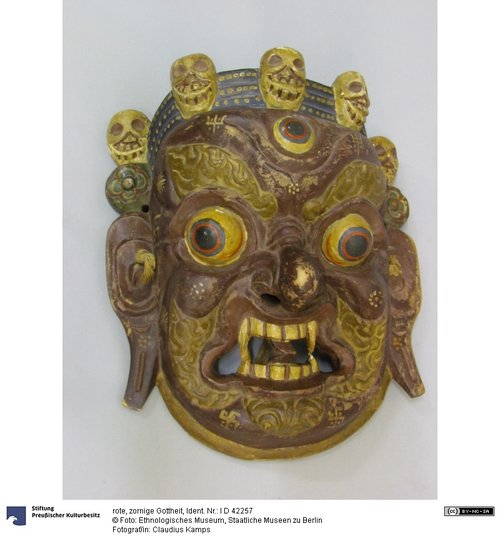Chamtanz-Maske. Die während der Chamtänze eingesetzten Masken repräsentieren Götter, Dämonen und Tiere. Sie repräsentieren Hüter der buddhistischen Lehre oder gimmig maskierte Schutzgottheiten. Oft haben sie ein bedrohliches Äußeres, denn um so furchteinflößender sie aussehen, um so effektiver können sie böse Geister vertreiben. Die Masken sind wie diese aus Holz geschnitzt oder aus Papmache angefertigt.
Cham Tänze sind von Musik begleitete Maskentänze. Sie werden sowohl im Bön als auch von tibetischen Buddhisten aufgeführt. Das klösterliche Mysterienspiel symbolisiert den Sieg des Buddhismus über die dunklen Aspekte des Daseins.
en

